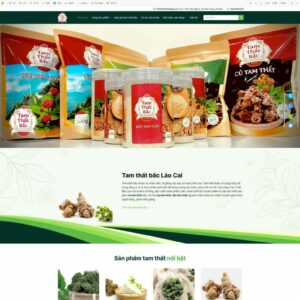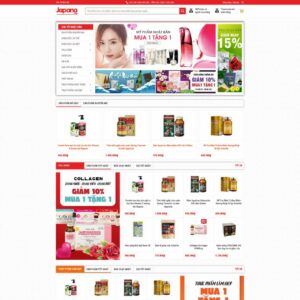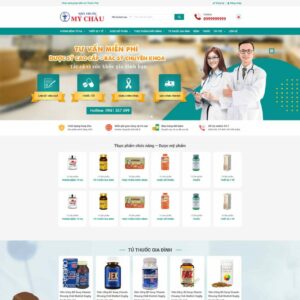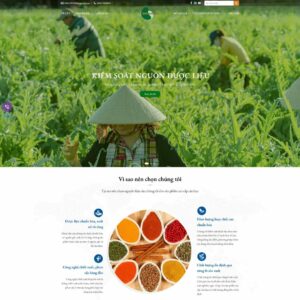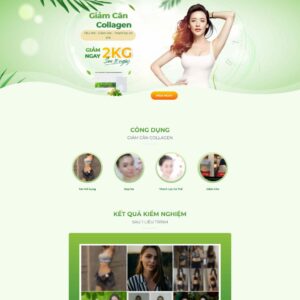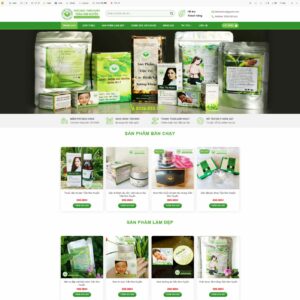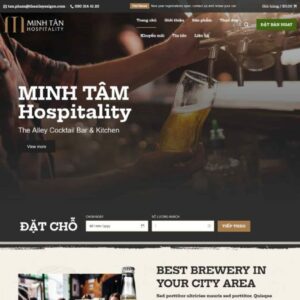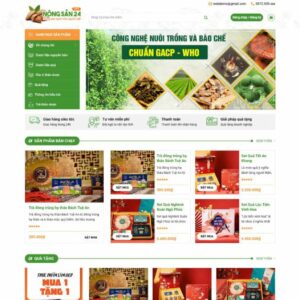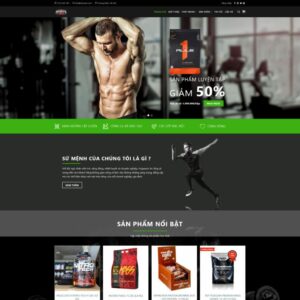
The Bac Tam That WordPress theme is optimized for display on all devices, suitable for Sales, Cosmetics, and Functional Food categories.
The WordPress theme for food and sleep powder helps you easily manage the sales of agricultural products, food, and functional foods effectively.
The domestic Japan e-commerce theme offers a refined shopping experience, quality, with a unique atmosphere, neutral colors, and appealing images.
The WordPress theme Pharmacy 02 helps you build a modern healthcare website, attracting customers with professional features and a diverse catalog.
The WordPress theme for pharmaceuticals features a modern design, refined interface, and elegant colors, helping to convey a professional message and make a strong impression.
The WordPress landing page theme for weight loss powder is suitable for cosmetics and functional food businesses, optimized for conversion and attracting customers.
The WordPress theme for selling honey is designed for Food and Functional Foods. Easy optimization, attracts customers, and effectively boosts sales.
WordPress Theme for Selling Pharmaceuticals Year 02 with categories for Sales, Functional Foods, Health and Medicine, optimized for revenue.
Professional WordPress theme for restaurants selling wine, optimized for SEO with a variety of services, enhancing customer experience and effectively increasing revenue.
The WordPress theme for introducing an organic milk company is the perfect choice for natural dairy businesses, attracting customers with Sales and Health categories.
The WordPress theme for Food 25 helps showcase attractive products with detailed information and customer reviews, making it easy for searching and selection.
Explore the WordPress gym store theme with Sales, Hot Theme, and Functional Foods categories, perfect for your fitness shop.
1. Benefits of Designing a Professional Functional Food Website
Designing a professional functional food website offers numerous benefits for businesses, helping them reach target customers and enhance brand credibility. An SEO-friendly website supports businesses in appearing on the first page of search engines, increasing the likelihood of attracting potential customers. Additionally, the website provides comprehensive information about products, ingredients, benefits, usage instructions, and promotional programs, helping customers understand and trust online shopping.
2. Essential Features for a Functional Food Website
A functional food website needs to integrate key features to provide the best online shopping experience for customers. The website’s interface should be modern, reflecting the quality and reliability of the products.
2.1. Modern Interface Reflecting Product Quality
The functional food website’s interface should be designed with a modern touch, using fresh colors like green, white, and orange to create a sense of safety and healthiness. High-quality product images should clearly display packaging details, ingredients, and benefits. The homepage layout should logically organize sections such as product categories, featured products, health-related articles, and online ordering.
2.2. Diverse Product Category System
The website should have a clearly categorized product system divided into groups such as: vitamins, minerals, weight loss products, weight gain products, immune boosters, and beauty supplements. Each product should have a detailed information page that includes: images, product descriptions, ingredients, benefits, usage instructions, pricing, and customer reviews. Providing complete information helps customers easily understand and make accurate purchasing decisions.
2.3. Integration of Ordering and Online Payment Features
The online ordering and payment features are crucial for a functional food website. Customers can easily select products, quantities, payment methods, and place orders directly on the website. This feature not only saves customers time but also helps businesses effectively manage orders, optimize the sales process, and increase revenue.
3. SEO Standard Design Process for Functional Food Websites
Designing an SEO-friendly functional food website is essential for businesses to reach customers and enhance operational efficiency. A standard design process will create a better user experience and help the website rank higher in search engines.
3.1. Conceptualizing Interface and Features
The functional food website’s interface should be conceptualized based on the product characteristics and brand. The design approach should aim for freshness, modernity, and reliability. Functions such as product viewing, ordering, and contacting should be designed to be simple and user-friendly. Call-to-action (CTA) buttons like “Add to Cart,” “Buy Now,” and “Contact Us” should be prominently placed to encourage customer interaction.
3.2. Building Quality and Reliable Content
The website content should focus on providing detailed information about products, ingredients, benefits, usage instructions, and related scientific information. Use relevant keywords such as “functional food website design” and “buy functional food online” naturally within the content to optimize SEO. Sharing articles about nutrition knowledge and the benefits of functional foods can help attract and retain customers while enhancing brand credibility.
3.3. On-Page SEO Optimization for Functional Food Websites
Optimize SEO elements such as title tags, meta descriptions, headings, URLs, and ALT tags for images on the website. Use internal links between product pages and shared articles to increase connectivity and assist customers in their information search. Optimize page load speed and ensure the website is mobile-friendly to improve search engine rankings and enhance user experience.
4. Modern Trends in Functional Food Website Design
Current trends in functional food website design focus on user experience, integrating modern features, and optimizing interfaces.
4.1. Simple Interface Design Focusing on Products
The functional food website interface should be designed simply, focusing on clearly and detail-oriented product displays. Use bright colors like green, orange, and white to create a sense of safety and healthiness. A clear layout helps customers easily search for and select products that meet their needs.
4.2. Integration of Product Introduction and Usage Instruction Videos
Integrating videos that introduce products, production processes, and usage instructions can make the website more dynamic and visually engaging. Videos help customers understand products better and build trust in their quality and effectiveness, thereby encouraging purchase decisions.
4.3. Mobile Optimization
The functional food website must be compatible with all devices, including computers, phones, and tablets, allowing customers to access and shop anytime, anywhere. This enhances user experience and increases customer reach, especially for those frequently using their phones to search for and purchase functional foods online.
5. Choosing a Reputable Functional Food Website Design Agency
To have a professional functional food website, businesses should select a reputable design agency with experience in e-commerce website design. The agency should provide comprehensive design, programming, and SEO optimization services to ensure the website operates effectively, attracts customers, and enhances the shopping experience.
Conclusion
Designing an SEO-friendly functional food website is an optimal solution for businesses to reach customers, promote products, and increase sales. Invest in website design today to build a reputable brand and achieve sustainable growth in the functional food industry.
Related Keywords:
- Functional food website design
- Online functional food sales website
- E-commerce functional food website design
- Buy functional food online
